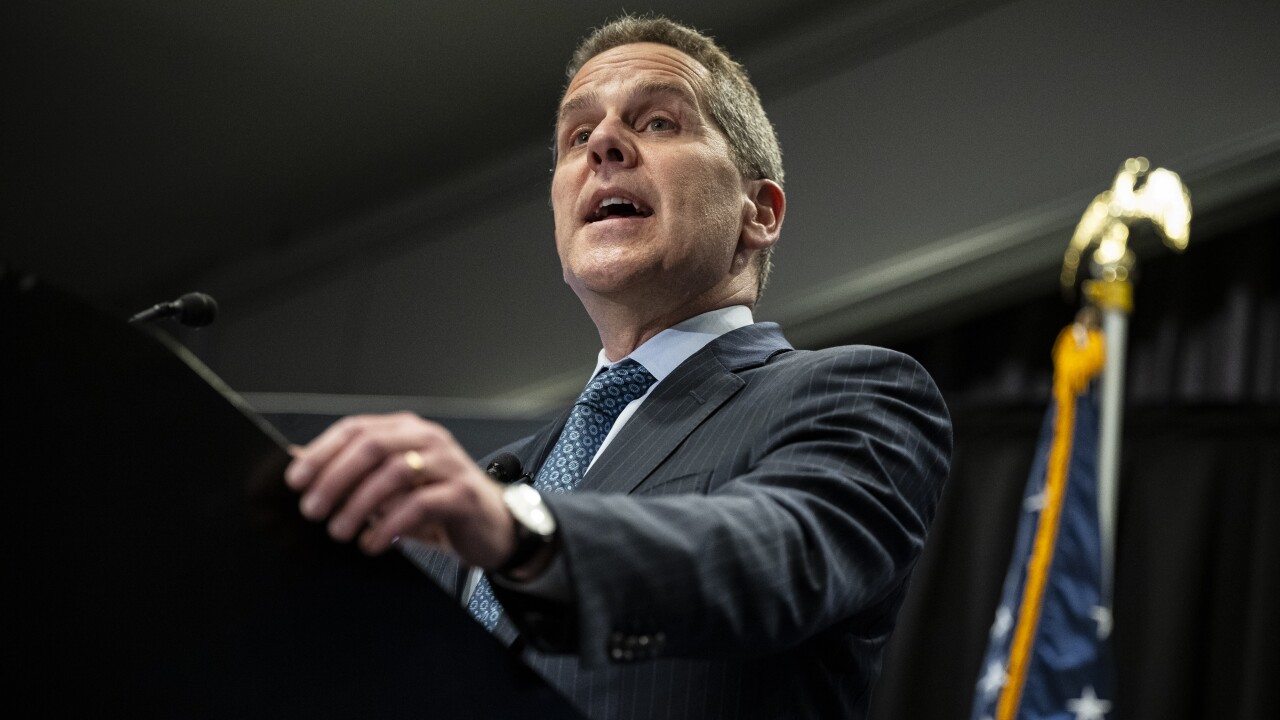One consequence of the Federal Reserve's takeover of American International Group Inc. is that the government has acquired yet another mortgage business — this one focused on direct subprime lending.
Since 2001 AIG has owned American General Finance Inc., an Evansville, Ind., outfit with $29 billion of assets and more than 1,500 branches nationwide. It classifies most of the loans made through those branches as "subprime" or "nonprime."
Though American General did not attract as much attention as other subprime lenders during the recent mortgage boom and bust, consumer activists have criticized its practices over the years.
After the Fed agreed this week to lend up to $85 billion to AIG in exchange for a 79.9% equity interest, allowing the New York insurance conglomerate to avoid bankruptcy, several activists said they would like to see the regulator exert control over American General.
However, industry observers said they doubted the central bank would do so. The Fed would not comment for this story.
"I think this is really a test case for the Fed in terms of consumer protection," said Matthew Lee, the executive director of Inner City Press/Fair Finance Watch in the Bronx, N.Y. "They've now put themselves … elbow deep into the questionable field of subprime."
Similarly, Bruce Marks, the chief executive of the Neighborhood Assistance Corp. of America, an advocacy group in Boston, said that as with Fannie Mae and Freddie Mac — which were placed in receivership this month — the takeover of AIG has created "an opportunity" for the government to prevent foreclosures.
"Are American taxpayers going to foreclose on themselves?" he said.
(Since it seized IndyMac Bank in July, the Federal Deposit Insurance Corp. has treated the failed thrift's portfolio as a test lab for foreclosure-prevention strategies.)
Oliver Ireland, a partner in the Washington office of the Morrison & Foerster LLP law firm, and a former associate general counsel at the Fed, said he would guess that the central bank "thought about this ahead of time and wanted to make sure that … they got enough control, so to speak, to protect their interests and their investment while at the same time trying not to run the day-to-day operations."
From the Fed's perspective, he said, "you probably don't want to be the management of the company because managing the company includes liability for mismanagement. But you do want to be able to take steps to protect your investment."
Still, pressure from interest groups "may have some effect," Mr. Ireland said. "I think they'll take that into consideration."
Gilbert Schwartz, a partner in the Schwartz & Ballen LLP law firm in Washington, and a former associate general counsel at the Fed, also said he "would be very surprised if the Fed" were "regarded as in control of the institution on a daily basis."
Rather, he said, "the model that I would think would be more likely would be kind of the hedge fund investment," with a more hands-off approach.
"External pressures from various interest groups" are "out there," Mr. Schwartz said. "And that's the reason why I suspect that they … structured" the equity interest through warrants.
Mr. Lee said he understood that many people would prefer that the Fed sell "off anything that they can to protect taxpayers. I'm sure they have some argument that the taxpayers are at risk." But "even in selling it off," he said, "then it becomes important that they search out a buyer who will be a responsible operator of the company."





